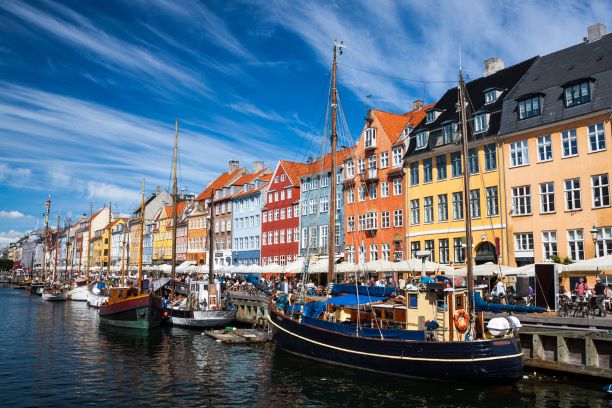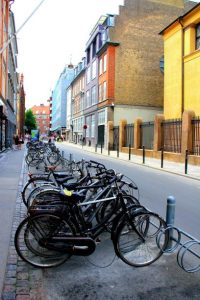

Danish capital Copenhagen, one of the oldest Scandinavian cities, sits geographically between mainland Europe and Scandinavia in Denmark.
But Copenhagen – a city of wind turbines, bicycles and reliable public transportation – thinks it can go even further. It wants to go carbon neutral in just 7 years. The city already boasts of being the happiest city in the world (The World Happiness Report 2013) and a bikers paradise.


While cities and countries around the world still search for ways to turn the 2015 Paris agreement on climate change into a reality, Copenhagen has outlined its own plan called CPH 2025 to completely reimagine its energy consumption, production, mobility and administration works.
“With the climate plan, we are investing in growth and quality of life; Copenhageners will have a better daily life. The investments are ensuring jobs now – and the new solutions are providing the foundation for a strong green sector.“ says Mayor of Copenhagen, Frank Jensen.
[related_post]
Copenhagen which emitted 1.9 million tons of CO2 a couple of years ago, has slashed its emissions to 1.37 million tonnes in 2017. By 2025, this will have fallen to 1.2 million tons solely due to a number of planned activities, such as switching from coal to biomass in combined heat and power plants in the Capital Region and because of the conditions in the existing legislation on energy and transport.
“Copenhagen wants to be the world’s first carbon-neutral capital in 2025. This is an ambitious plan requiring long-term action, but it is realistic. We are already well underway. In 2011, Copenhagen had reduced CO2 emissions by 21% compared to 2005. This plan shows how: we need to construct wind turbines and convert the energy supply, all Copenhageners must use their bikes more, we will purchase buses that operate on electricity and biogas, buildings in Copenhagen must be energy retrofitted, we will invest in solar energy – plus numerous other initiatives.”
“Several solutions are based on known technology just waiting to be implemented. In other areas, we will focus on the need for developing new technology. A cornerstone in the climate plan is, therefore, initiatives for collaboration with the business community, the Government, organizations and research institutions.” Ayfer Baykal, Mayor of the Technical and Environment Administration, said in a statement.
In order to become carbon neutral by 2025, the city must use less energy than it does today and at the same time divert energy production to green energy. In addition, a surplus of green energy must be produced to offset the emissions that will continue to be generated from for example transport.
While other cities have parking garages for cars, Copenhagen has them for bicycles. Virtually all its 600,000 residents own a bicycle, and the city has 375 kilometres of dedicated cycle lanes. The harbor-rimmed municipality also is mostly powered by clean energy – and it has its own renewable energy company and wind turbines.
Running its own energy systems is one of the reasons Copenhagen is already well on track to being carbon neutral – meaning it will produce no more carbon emissions, and it can offset too- by 2025.
The city’s concerted efforts to go green has put it firmly ahead of the schedule set by almost 200 nations in Paris to effectively phase out greenhouse gases between 2050 and 2100.
Strong action to combat climate change could cumulatively add at least $26 trillion to the world economy by 2030, according to a September 2018 study by the Global Commission on the Economy and Climate.
Copenhagen plans to spend at least 2.7 billion Danish krones ($410 million) by 2025 and follow its plan to achieve carbon neutrality – but that doesn’t mean that it would just spend. According to the city council, the city will also attract nearly 300 billion krones ($45.3 billion) in private green investment and gain the title of the world’s first carbon neutral capital as a prize too.
1. The mandate for blending Compressed Biogas (CBG) with natural gas has come into effect…
Andhra Pradesh is striving towards greening its energy sector with quite some speed. In a…
With an objective to bolster India’s green energy goals, a Tripartite Agreement has been signed…
The Union MNRE Minister Pralhad Joshi launched the Green Hydrogen Certification Scheme of India (GHCI)…
India’s energy conglomerate Bharat Petroleum Corporation Limited (BPCL) has commissioned a 5MW green hydrogen plant…
In a historical development, the European Space Agency (ESA) has successfully launched its pioneering ‘Biomass’…